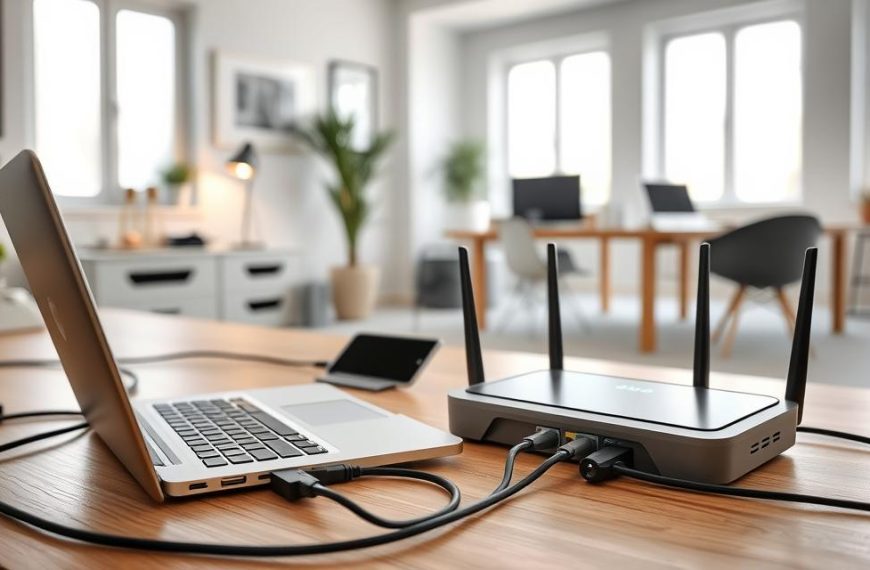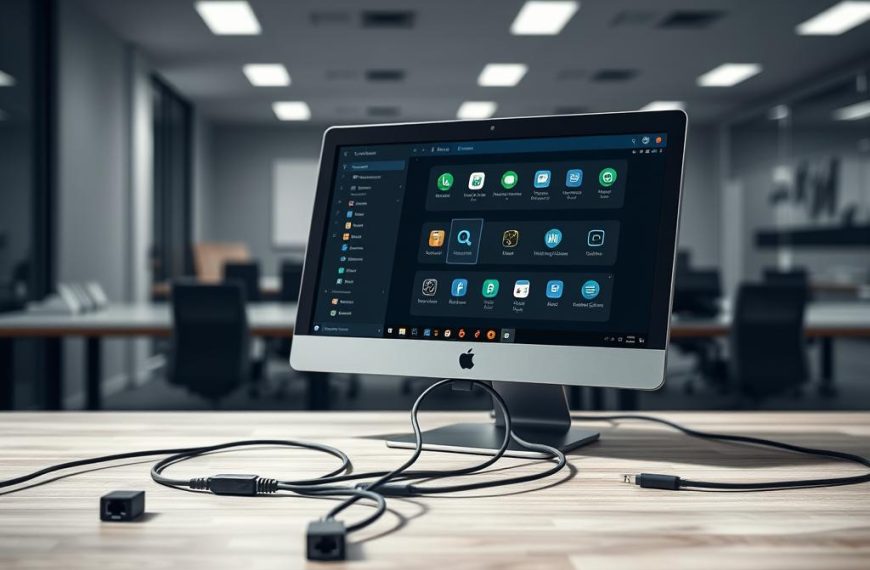Ever noticed the gap between lightning and thunder? That split-second difference highlights how signals travel at varying speeds. The same principle applies to data transmission in modern networks. Signals take time to move, whether through cables, fiber optics, or wireless connections.
This time gap, known as propagation delay, directly impacts performance. The speed of light sets the ultimate limit—no signal moves faster. Copper wires and fiber optics slow it down further, affecting how quickly your devices communicate.
Distance plays a key role too. A signal crossing continents faces higher delays than one traveling across a room. Engineers account for this in high-speed circuits and global networks to prevent errors and slowdowns.
By understanding these factors, you can optimize setups for faster, more reliable connections. Every nanosecond counts in today’s data-driven world.
What Is Propagation Delay in Computer Network?
Data doesn’t move instantly—even at light speed, signals face travel time. This lag, called propagation delay, measures how long a signal takes to reach its destination. The formula is simple: Delay = Distance / Speed. But the factors behind it shape modern networking.
The Science Behind Signal Travel Time
Signals slow down based on their medium. Copper wires transmit at 59%–77% of light speed, while fiber optics hit ~200,000 km/s. Temperature and material purity also affect semiconductors, altering delays in circuits.
Ethernet cables cap at 500 meters to avoid collision domain issues. Beyond this, delays disrupt signal timing. For example, a 2.1km fiber line introduces a 0.01ms delay—tiny but critical for high-frequency trading or VoIP calls.
Everyday Examples of Propagation Delay
Satellite TV shows a 0.5-second lag due to signals traveling 35,786 km to geostationary satellites. Even gaming ping reflects the distance between your device and the server.
| Medium | Speed | Delay for 100km |
|---|---|---|
| Copper Wire | 0.59c–0.77c | 0.43ms–0.56ms |
| Fiber Optics | ~200,000 km/s | 0.5ms |
| Wireless (Light Speed) | 299,792 km/s | 0.33ms |
Propagation Delay vs. Transmission Delay: Key Differences
Network performance hinges on two critical timing factors that often get confused. While both affect speed, they stem from distinct processes. One governs how data travels physically; the other depends on how it’s packaged and sent.
How Transmission Delay Works
Unlike travel time, transmission delay measures how long it takes to push all bits onto a link. Think of it like loading a train: more cars (larger packets) or slower loading (lower bandwidth) increase the wait. A 100KB file on a 2Mbps connection takes 5.12ms just to enter the network.
Calculating Propagation and Transmission Delays
Use these formulas to quantify each:
- Transmission Delay: Packet Size (bits) ÷ Bandwidth (bps). Example: 12,000-bit packet on 100Mbps = 0.12ms.
- Propagation Delay: Distance ÷ Speed (medium-dependent). A 10,000km copper wire adds ~5×10−5 seconds.
Real-World Networking Scenarios
5G mmWave beams data at light speed but struggles with obstacles like buildings. Similarly, Ethernet cables beyond 500 meters trigger late collisions due to overlapping signals—proof that distance and medium both matter.
| Delay Type | Depends On | Example |
|---|---|---|
| Transmission | Packet size, bandwidth | 4K video packet (150KB) on 1Gbps: 1.2ms |
| Propagation | Distance, medium speed | NY to London fiber: ~18.57ms |
How Propagation Delay Impacts Network Performance
Satellite internet’s 240ms lag shows why medium choice matters. Geostationary orbits force signals to travel 35,786 km, creating noticeable delays. This highlights how distance and transmission medium shape latency.
Fiber optics slash travel time for long-distance data. At 200,000 km/s, they’re 3x faster than copper wires. Yet, even fiber can’t escape physics—NY to London still incurs ~18ms delay.
Inconsistent delays in IC gates cause race conditions. When signals arrive out of sync, processors misfire. This limits clock speeds and demands precision engineering.
Repeaters amplify signals but add microseconds. For high-frequency trading or live streaming, these tiny increments stack up. Wireless networks face similar trade-offs—speed of light vs. obstacle interference.
- Real-time apps suffer most: VoIP calls distort when delays exceed 150ms.
- Gaming ping reflects physics: A server 1,000km away adds 3ms–5ms lag.
- Global routing favors fiber: Copper’s 0.59c speed loses to optics over continents.
Every link in the chain contributes. Optimizing for speed means balancing distance, medium, and application needs.
Optimizing Your Network to Reduce Propagation Delay
Every millisecond counts in high-performance networks. Strategic optimization minimizes lag by addressing key factors like distance and medium selection. Whether upgrading infrastructure or redesigning layouts, smart choices slash delays significantly.
Choosing the Right Transmission Medium
Fiber optics outperform copper for long-haul links, transmitting data at ~200,000 km/s—67% faster than electrical signals. This cuts propagation delay by over 30% on transcontinental routes. For shorter runs, Cat6a cables balance cost and speed.
5G mmWave delivers blazing speed but requires dense small-cell deployments. Unlike fiber, its high-frequency signals struggle with obstacles. Urban areas benefit from hybrid designs mixing fiber backbones with localized wireless.
Strategic Network Design Considerations
Edge computing places servers closer to users, reducing physical distance. A content delivery network (CDN) with regional nodes can halve lag for streaming or gaming. According to Networx Security, repeater spacing should align with medium limits—500 meters for copper, 80–100km for fiber.
- Prioritize latency-sensitive traffic: VoIP and video calls need QoS protocols to bypass congestion.
- Segment collision domains: Keep copper runs under 500 meters to prevent signal overlap.
- Leverage fiber backbones: Ideal for connecting data centers with minimal signal loss.
These tactics ensure transmission efficiency while mitigating physical constraints. The right blend of technology and topology keeps networks fast and responsive.
Conclusion
Network speed faces physical limits—signals can’t outpace light. Propagation delay remains a fixed constraint, shaping how we design modern systems. From fiber backbones to 5G towers, every choice impacts latency.
Key optimization strategies include selecting faster mediums like fiber optics and reducing distance through edge computing. For real-time apps, even microsecond improvements matter.
The rise of IoT and 5G demands lower lag. Future tech like quantum networking may redefine these limits. Audit your setup now to eliminate unnecessary delays.
Remember: data moves at physics’ mercy, but smart design maximizes speed. Prioritize low-latency paths for critical traffic, and stay ahead of evolving standards.














